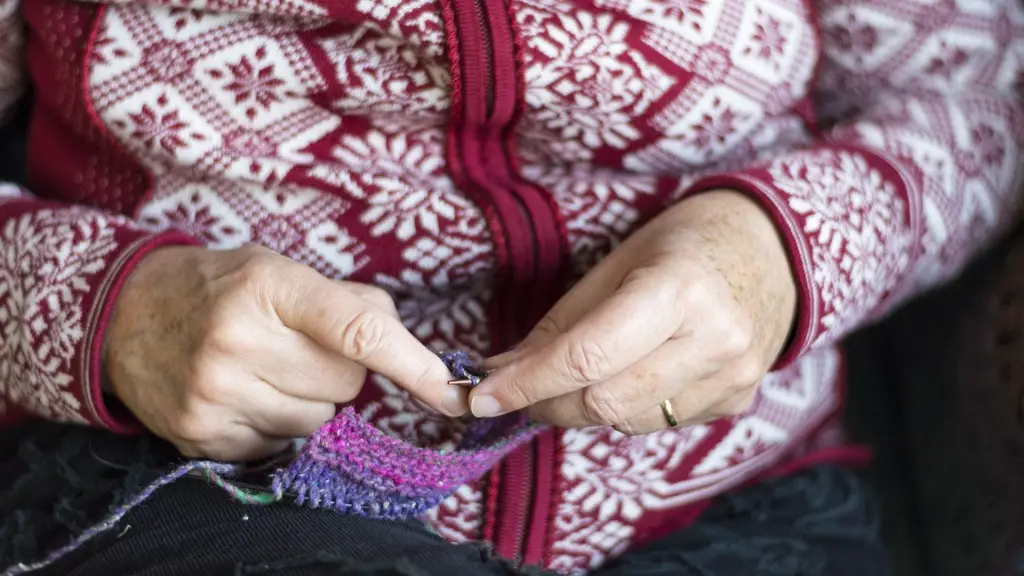Essential Sewing Machine Maintenance
Maintaining a sewing machine is essential for any sewing enthusiast. From maintaining proper lubrication, to replacing threads and needles, to changing the settings and components, proper maintenance not only increases the life of the machine but also ensures steady and flawless performance. A regular check-up and servicing of the machine ensure that it works properly and allows sewists to get the most out of their sewing experience.
While it may sound daunting at first, regular maintenance is actually quite straightforward. It involves various activities such as cleaning, oiling, and repairing minor faults which can be done at home. But, one of the most important parts of regular sewing machine maintenance is replacing needles. The needle is the most essential part of the machine and its condition is important to achieve the best possible results.
Checking the Needle
Most machines require users to change their needles, or at least check their condition regularly. This is important not only because a worn or damaged needle can cause skipped stitches and thread breakages, but also because it can leave permanent damage to the fabric. To check whether a needle needs to be replaced, one should start by examining the needle tip; if it is slightly bent or dull, it is time to discard it.
However, one should also examine the needle such as its size and shape. The right size and shape must be used for a specific type and weight of fabric. Consequently, the needle size should be checked and changed in line with the type of work and fabric being used. For this purpose, the Singer Sewing Company offers various needle sizes for different types of fabrics; for example, a denim needle works well for heavier fabrics, while a quilting needle is best for quilt projects.
Changing the Needle
Once it is decided that a needle should be changed, it is crucial to avoid damaging the needle when inserting it. To ensure easy and safe installation of the new needle, one must first switch off the machine, unplug it and remove the old needle. It is then a matter of placing the new needle in the machine, bringing it to the top position and tightening the screw securely.
To further ensure the stability of the needle and its ability to perform, users should tighten the pin without excessively forcing it. Some models of machines from the Singer brand feature a brightly colored pin which makes it easier to distinguish it from the rest of the machine.
Other Tips
It is also important to be careful when handling the needle. Users should always handle the needle with care and inspect it for any damages or deformations before placing it in the sewing machine. Additionally, users should avoid using the same needle for an excessive amount of time as it could lead to the wearing out of the needle and damaging the fabric.
Moreover, one should also take proper safety precautions; the power plug should be unplugged at all times before attempting to change the needle, and extra care should be taken to ensure one does not operate the machine with a foreign or damaged needle. Finally, before each use of the machine, one should also test the needle by making a few stitches.
Consult the Manual
Finally, if the machine presents any difficulties in changing the needle, its manual should always be consulted. Most manuals provide detailed instructions on how to adjust and replace the needle. Singer manuals, for instance, provide highly detailed and illustrated guidelines for their various sewer models. If these does not work, then it is worth consulting an experienced seamstress or taking the machine for an official service.
Cleaning the Sewing Machine
In addition to changing the needle, there are other precautions to take when maintaining the machine. Before doing any deep-cleaning activities, one should always consult the Singer manual, as some of their models have specific instructions on deep-cleaning. Generally, one should start by wiping off the machine with a clean, soft cloth. A small brush can also be used to remove any lint or dirt that build up in the corners and hard-to-reach spaces of the machine.
After this is done, users can apply a few drops of machine oil over the other parts of the machine; this is to ensure all moving parts are running with ease and are well lubricated. One should not put too much oil as this will cause a bigger mess. Finally, once all of the parts are cleaned and oiled, the cover of the machine should be put back on, and the machine should be tested with a few stitches.
Safety Must Come First
Although there are several methods for cleaning and maintaining Singer sewing machines, safety must always be kept in mind. Whenever attempting to clean or repair the machine, users should unplug it and make sure that the power source is entirely disconnected. Additionally, any repairs should only be done with approved parts, and when in doubt or doubt over a specific project, consulting an experienced seamstress or technician is always advised.
Carry Out Regular Check-Ups
It’s also important to carry out regular check-ups and services on the Singer sewing machine. It is worth checking that all components are functioning as intended, as well as inspecting the condition of all parts of the machine. Additionally, if any parts need replacing or repairing, they should be done as soon as possible. This will ensure that the sewing machine continues to provide high-quality results.
Conclusion
In conclusion, changing the needle of a Singer sewing machine is an essential part of regular maintenance. By following the steps outlined, users can easily and safely make any needed changes to their sewing machine. Furthermore, by carrying out regular check-ups and services, users can ensure that their machine is always in a good condition and provides great results.



